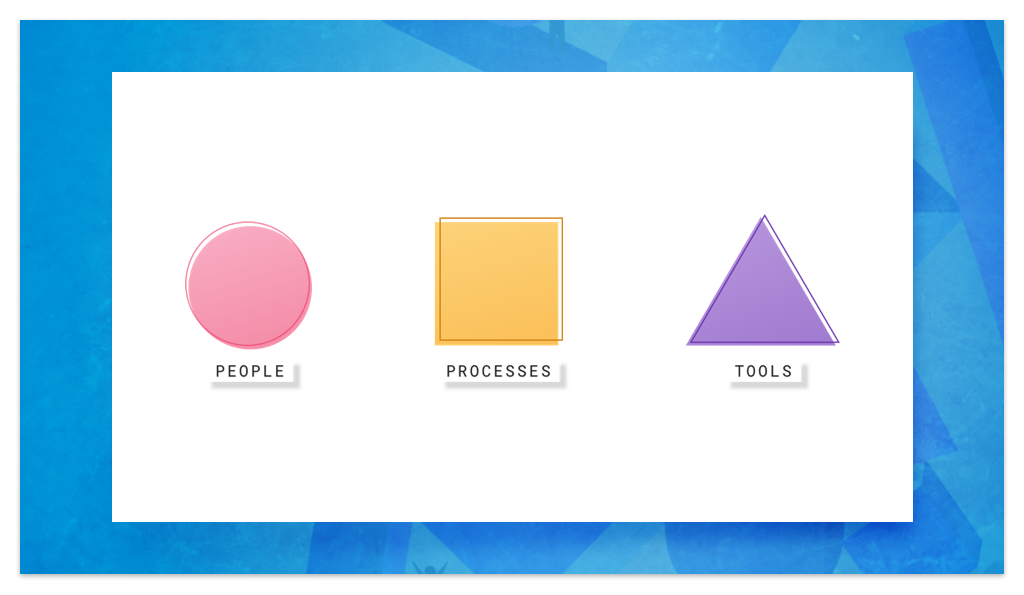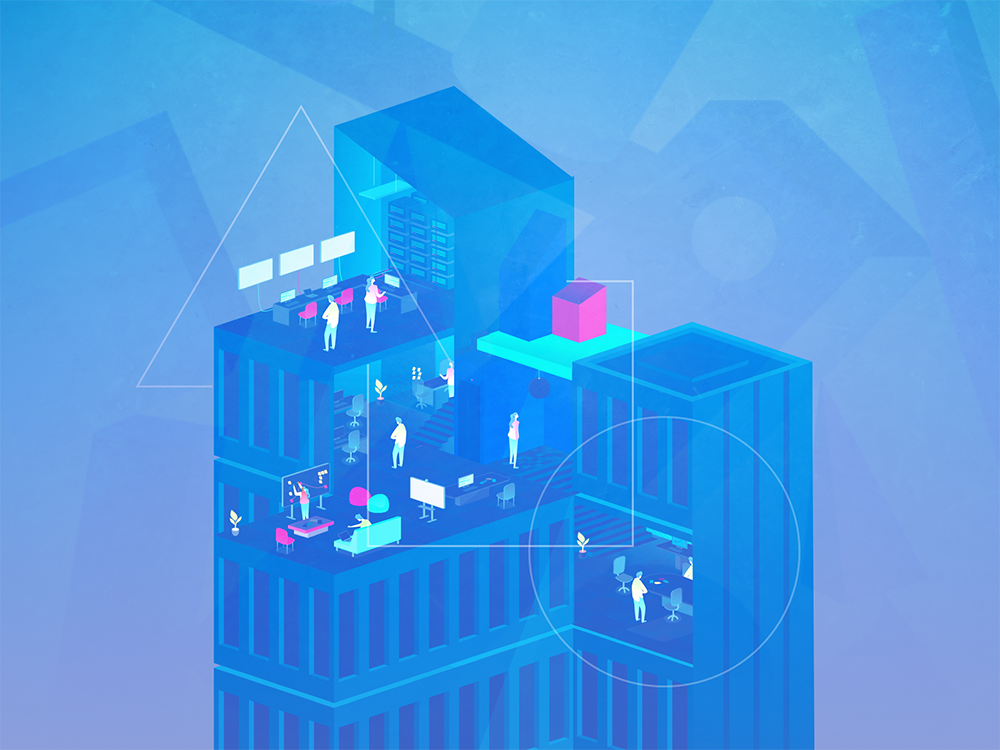Innovation demands that you see the world through multiple lenses at the same time. – Dev Patnaik, Jump Associates
Business at scale: struggling to grow
Businesses are constantly pushed to deliver more, better, and faster. Companies suddenly find themselves in a position to act and adapt. And as this pressure increases over time, teams across the company experience a need to grow, both in expertise (technology innovation, service design, branding, and so on) as well as in the number of people. Many organisations are facing challenges when it comes to the interaction between business, development, and human needs. They are forced to re-evaluate company structure in order to overcome these internal challenges and work more efficiently.
In his book Intersection, author Milan Guenther argues that, in order to address fast growth, “modern enterprises must overcome the siloed thinking and isolated efforts of the past, and instead address internal relationships holistically.”
A design-led approach can be used to tackle these challenges, by making a future transformation more visible. Most design philosophies are based on a fundamental understanding of the people you are designing for, making design a powerful tool to bridge departments and build a human-centred vision of the future.
As companies grow, most think that adding on a design department is enough. The truth is, it’s not.

It should be embedded into all levels of an organisation. We need to get design into all corners of the company, and to get the most value of design (it’s no news that good design is better for business), everyone needs to be concerned about the user’s experience. It’s not a job, it’s a team effort.
Building a design-led organisation in Visma
At Visma, we are committed to becoming a design-led organisation, taking a more universal approach to how people collaborate, in order to deliver better experience to our customers. Part of Visma’s strategy for the future is to create a relevant and inspiring story, develop a design vision and, as a more recent initiative, form a team dedicated to Design Operations.

Design Operations – the practice of reducing inefficiency in the design workflow through improved processes, tooling and team structure. It’s making sure that there is much tighter cooperation with other parts of the organisation, so that design improvements can get into users’ hands as quickly as possible.
Yet, as we grow, design is not integrated in the process. Design doesn’t become a common language that everyone in the company knows how to speak. So how do we achieve this? How can we integrate design thinking into a massive organisation like Visma?
Leading by example and knowledge-sharing
When looking at the interactions between people and departments in a large company, we’ll find several examples of failed relationships: business not always understands development, designers fight for the users but sometimes fail to appreciate the business needs, and development struggles to relate to design practices. Changing these internal relationships can be difficult in larger companies. It requires a broader perspective that spans across domains; going beyond the traditional analytical and decision-centered mindset.
“It requires involving people with different backgrounds and a diverse skill set and making them collaborate effectively to achieve innovation.” – Milan Guenther
To break these barriers, the first step is for all the involved parts to start using same language. IBM, for example, did a great job at educating the entire company about design practices, drawing special attention on how these could be useful to everyone, not only designers. They started by getting everyone on the same page about what it meant to “design” and how to keep the user at the core of everything they did.
Learning how to work together through shared knowledge and collaboration as well as creating a culture of shared problem-solving can be highly beneficial to organisations. We need teams to be able to look at problems, and future vision, through multiple lenses at the same time. This is the ideal playing field for strategic design work. By changing the way people and businesses interact with one each other, we see faster and more efficient communication, greater transparency and the sharing of knowledge with one another.
But who can spark this change? Many believe that starts at the top, where the ability of leading by example is crucial. It comes with showing that we can tackle and understand problems with a comprehensive perspective, not only through a business prism.
Design Operations in the day-to-day
Managing the challenge described above won’t be easy. However, not embracing change means design is failing to realise its full potential. While making it a priority for the company is a long-term effort, there are some steps we can all focus on today.
At Visma, we see Design Operations as a cornerstone to scaling product development. It’s an initiative that focuses mainly on people, processes and tools – our three pillars of integrated design. We will work on finding the best way to support people who practice design (not limiting it only to “design” roles), on what processes we should establish to integrate design and on what tools we should use.

In the day-to-day, we will be focusing on important issues like drawing people’s career paths, building a knowledge base, defining the design workflow, determining organisational structure, fostering collaborative design, working on standardising tools and much more.
In the words of IBM’s Phil Gilbert: “Design is everyone’s job. Not everyone is a designer, but everybody has to have the user as their North star”.
If there is one thing Design Operations hopes to change in Visma it’s how we make design a constant in our everyday work, regardless of whether the label “designer” is in our job title.

